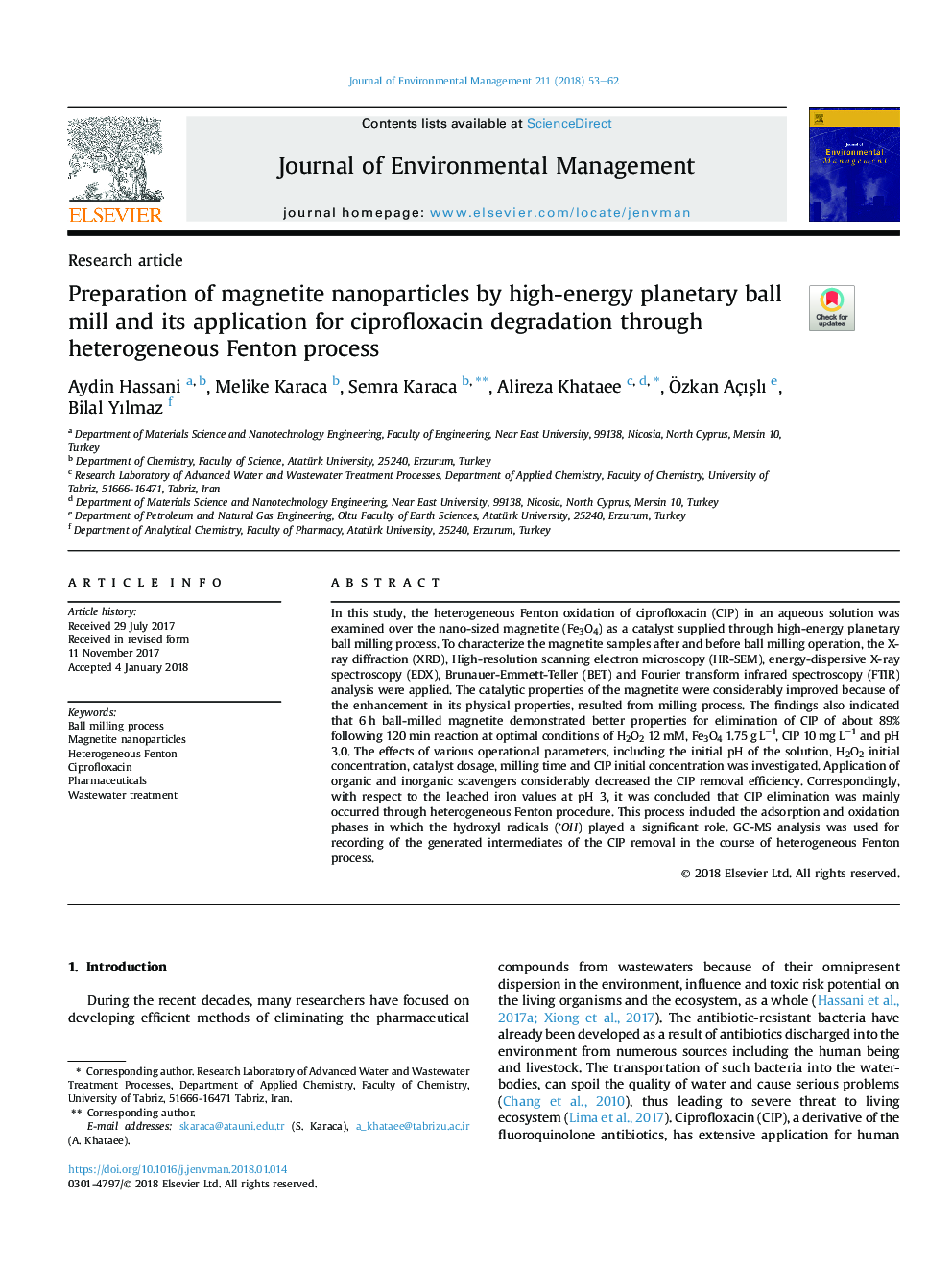| Article ID | Journal | Published Year | Pages | File Type |
|---|---|---|---|---|
| 7477971 | Journal of Environmental Management | 2018 | 10 Pages |
Abstract
In this study, the heterogeneous Fenton oxidation of ciprofloxacin (CIP) in an aqueous solution was examined over the nano-sized magnetite (Fe3O4) as a catalyst supplied through high-energy planetary ball milling process. To characterize the magnetite samples after and before ball milling operation, the X-ray diffraction (XRD), High-resolution scanning electron microscopy (HR-SEM), energy-dispersive X-ray spectroscopy (EDX), Brunauer-Emmett-Teller (BET) and Fourier transform infrared spectroscopy (FTIR) analysis were applied. The catalytic properties of the magnetite were considerably improved because of the enhancement in its physical properties, resulted from milling process. The findings also indicated that 6â¯h ball-milled magnetite demonstrated better properties for elimination of CIP of about 89% following 120â¯min reaction at optimal conditions of H2O2 12â¯mM, Fe3O4 1.75â¯gâ¯Lâ1, CIP 10â¯mgâ¯Lâ1 and pH 3.0. The effects of various operational parameters, including the initial pH of the solution, H2O2 initial concentration, catalyst dosage, milling time and CIP initial concentration was investigated. Application of organic and inorganic scavengers considerably decreased the CIP removal efficiency. Correspondingly, with respect to the leached iron values at pH 3, it was concluded that CIP elimination was mainly occurred through heterogeneous Fenton procedure. This process included the adsorption and oxidation phases in which the hydroxyl radicals (OH) played a significant role. GC-MS analysis was used for recording of the generated intermediates of the CIP removal in the course of heterogeneous Fenton process.
Keywords
Related Topics
Physical Sciences and Engineering
Energy
Renewable Energy, Sustainability and the Environment
Authors
Aydin Hassani, Melike Karaca, Semra Karaca, Alireza Khataee, Ãzkan AçıÅlı, Bilal Yılmaz,
